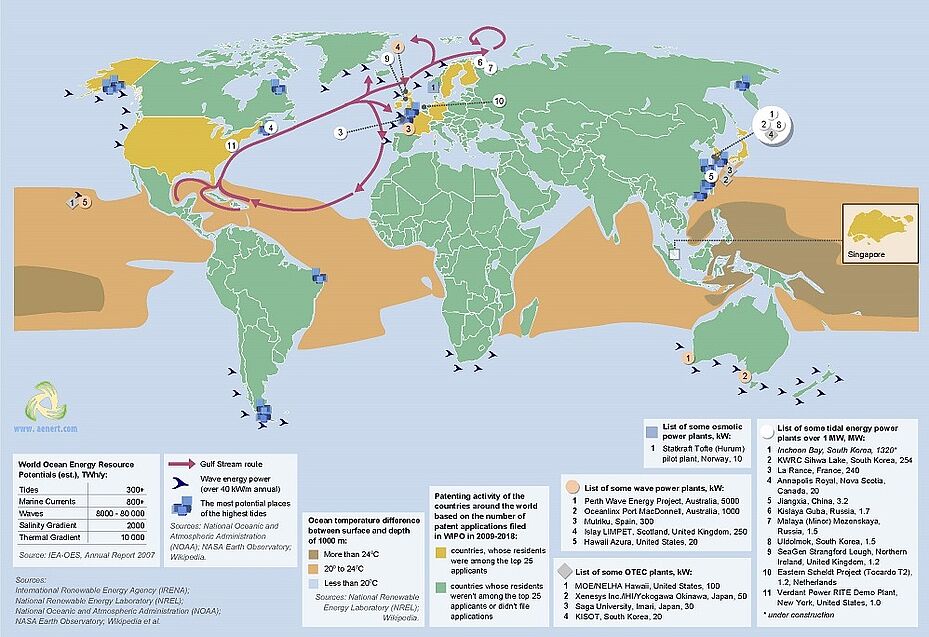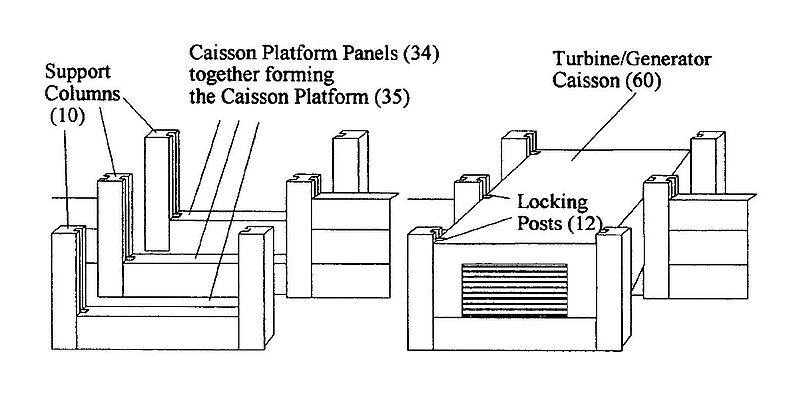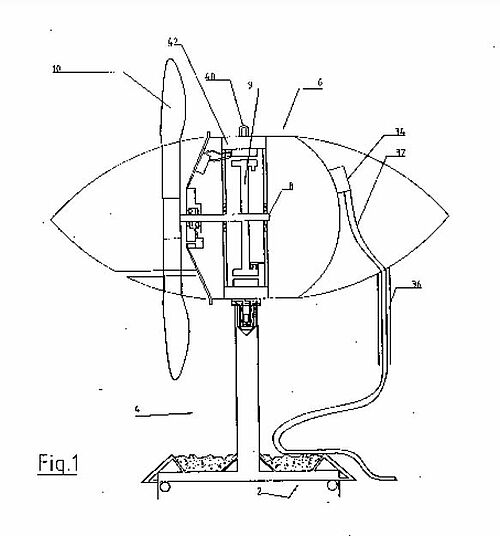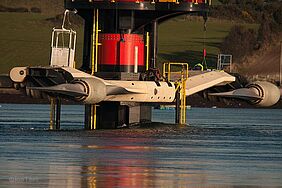Tidal energy is a very abundant source of energy which has the potential to power many homes around the globe. It is produced by the natural rise and fall of tides caused by the gravitational interaction between the earth, the sun, and the moon. Tidal currents with sufficient energy for harvesting occur whenever water passes through a constriction which causes the water to move faster. With the help of special generators placed in the right locations, tidal energy can be transformed into useful forms of power, including electricity. However, the technologies which are commercially-available for tidal energy production today are still in the early stages of development. For this reason, many scientists, research organisations and companies around the globe are leaving no stone unturned to come up with new methods to make tidal energy installations more efficient as well as less expensive.
Ocean Energy. Resources and Infrastructure
One such project was launched by the University of New Hampshire, United States, and concerns a real-world tidal turbine beneath New Hampshire’s Portsmouth Memorial Bridge whose aim is to turn tidal energy into an affordable clean energy resource for communities across the United States as well as other countries.
In 2022, in an effort to understand how well this turbine is operating, the University of New Hampshire have hired the engineer Aidan Bharath, who is currently working for the National Renewable Energy Laboratory, to design and build tools to collect the required data. The bridge will be outfitted with sensors that monitor its structural health as well as weather, traffic patterns, and the river flowing beneath it, and is a kind of living laboratory to study bridge structures, the latest sensor designs, and renewable energy technologies. The experimental tidal turbine situated in the river not only powers the sensors, but also provides clean energy to raise and lower the bridge, and even power several homes in the vicinity.
Under the bridge is located a vertical-axis tidal turbine closely resembling an eggbeater which spins in the rushing tides of the river. Because these types of devices are less common there is less prior research and data available to understand how they work. Therefore, for early device development the developers will rely on numerical models. In order to make their models more accurate, the numbers must be compared to actual experimental data, which is not an easy feat if you have to work with spinning machines submersed in salt water. For this reason, the custom-made Modular Ocean Data Acquisition System, which has been collecting and sharing live data on the performance of the turbine, will be improved by the team of scientists. Also, sensors to measure the strain tidal forces the blades are exposed to will be added. Once returned to the water, the sensors will transmit data to a larger data collection system on a platform above the surface before sending it to the cloud where it is stored for future use. Moreover, as wires can get tangled and salt water can be corrosive, the team built custom components, such as slip rings that collect data from the rotating blades, so that they will be able to deal with these challenges.
For many years, scientists have tried to effectively harness tidal energy. In 2005, scientists designed a tidal energy system which was structured in a manner that it can be operated together with an electrolyser and fuel cell technology to produce on-demand power, as it eliminates the pulse character of conventional tidal power. The system could also generate hydrogen as an end product. It consisted of a modular barrier construction, a method that significantly reduced the cost of the civil works. The basic version of the Tidal Energy System had a tidal containment wall which enclosed an interior body of water and an artificial tidal lagoon. A turbine/generator caissons was incorporated into the tidal containment wall, which was assembled from tidal containment wall sections.
Image: Tidal Energy system
Source: US6967413B2
In 2007, a system for converting the kinetic energy of flowing fluid into electrical energy was designed consisting of a turbine having a low speed electricity generator and a braking means for controlling the speed of the rotation of the shaft. Also, a nacelle for housing a number of components of a turbine was constructed and the nacelle was provided with a cover for selectively opening and closing the aperture to the nacelle so as to form a watertight seal therebetween. Furthermore, an apparatus for converting energy of a flowing fluid into electrical energy was designed comprising a nacelle with a turbine and a lifting means with a load flow path between the lifting point, the nacelle and the turbine.
Image: Tidal Current Turbine
Source: WO2007125349A3
There are many advantages involved in harnessing tidal energy: Tides are an abundant as well as reliable renewable energy resource because they are very predictable. Tidal cycles can only be disturbed, if the rotation of the moon or Earth stops. This circumstance makes tidal energy an important complement to solar power and wind energy; when the sun sets and winds are low, tides will continue to rise and fall. The data gained in the course of the project can improve current marine energy models, like OpenFAST, an open-source turbine simulation tool, and help marine energy developers improve their designs.
The eventual goal of the research is to gather data on the tidal turbine with the help of this system for two consecutive weeks which should suffice to analyse the potential tidal stream velocities. This time span is also a good opportunity to test how well different glues and protective coatings survive on the underwater blades. Eventually, this data set will be sent to the U.S. Department of Energy’s Marine and Hydrokinetic Data Repository where it can be accessed by the public.
The scientists are convinced that in the near future society will benefit from tidal deployments that are generating sustainable energy. This research is sure to make a significant contribution towards reaching this goal.
